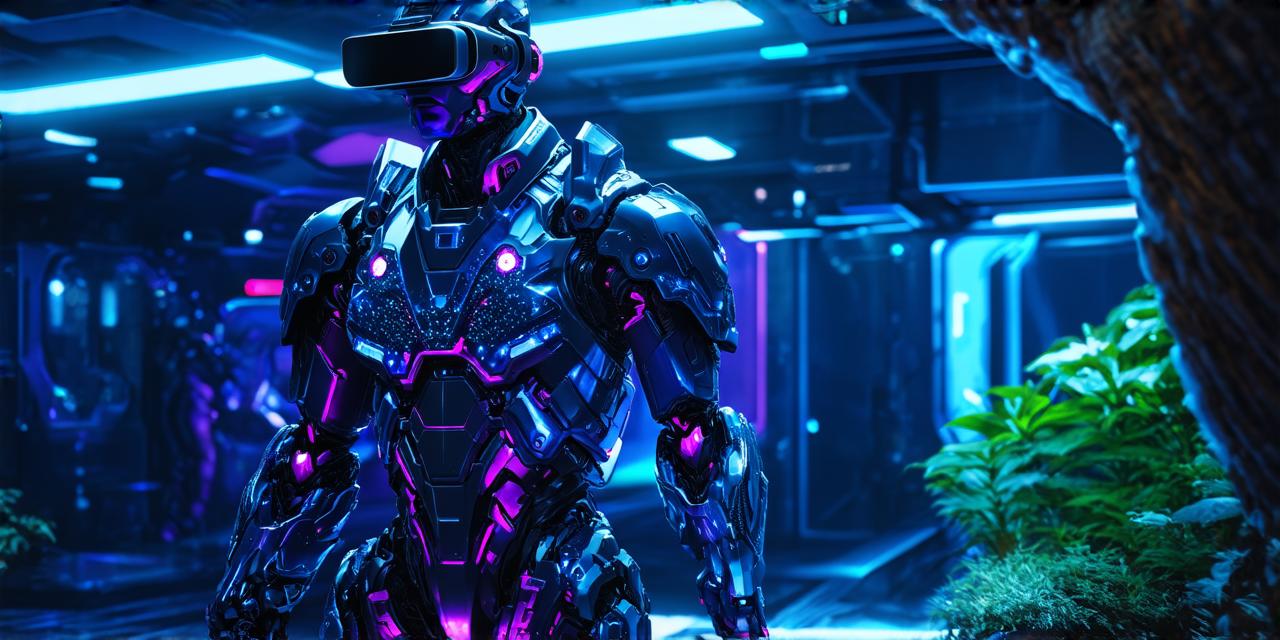Introduction: What is Unreal Engine 5?
Unreal Engine 5 is the latest version of Epic Games’ popular game engine that was first released in 1998. It is a real-time 3D creation toolkit that allows developers to create interactive applications, games, and other immersive experiences for various platforms, including PC, console, mobile, web, and VR. Unreal Engine 5 features advanced graphics, physics, and AI capabilities that make it ideal for creating complex VR applications with stunning visual effects and realistic interactions.
Why Use Unreal Engine 5 for VR Development?
There are several reasons why Unreal Engine 5 is the preferred choice for VR development:
- Advanced Graphics Capabilities: Unreal Engine 5 features a powerful rendering engine that can create stunning graphics with high-fidelity textures, lighting, and special effects. It also supports real-time ray tracing, which allows developers to create hyper-realistic reflections, shadows, and global illumination.
- Physics Simulation: Unreal Engine 5 has a robust physics simulation system that can accurately simulate the behavior of objects in a virtual environment. This makes it easy for developers to create realistic interactions between characters and objects in VR applications.
- AI Capabilities: Unreal Engine 5 includes advanced AI capabilities, including machine learning and deep learning, which allow developers to create intelligent NPCs (non-playable characters) and other interactive elements in VR applications.
- Support for Multiple Platforms: Unreal Engine 5 supports multiple platforms, including PC, console, mobile, web, and VR. This makes it easy for developers to create cross-platform applications that can run on different devices and platforms.
Getting Started with Unreal Engine 5 for VR Development
- Download and Install Unreal Engine 5: Go to the Epic Games website and download the latest version of Unreal Engine 5. Follow the installation instructions to install the engine on your computer.
- Create a New Project: Once you have installed the engine, create a new VR project by selecting “VR” as the project type. Choose the VR platform you want to develop for (e.g., Oculus Rift, HTC Vive) and select a template that best suits your needs.
- Design Your VR Environment: Use Unreal Engine 5’s powerful tools to design your VR environment. This includes creating 3D models, texturing, lighting, and setting up physics objects. You can also use the engine’s built-in AI tools to create interactive NPCs and other intelligent elements in your environment.
- Develop Your VR Application: Once you have designed your environment, start developing your VR application. This includes programming the logic for your game or application, integrating any external plugins or assets, and testing your application on a VR device.
- Publish Your VR Application: Once your VR application is complete, publish it to the platform of your choice (e.g., Oculus Store, Steam). You can then market and distribute your application to your target audience.
Real-Life Examples of VR Applications Created with Unreal Engine 5
There are many real-life examples of VR applications created with Unreal Engine 5, including:
- The Last of Us: A VR adaptation of the popular video game “The Last of Us” was developed using Unreal Engine 5. The game received critical acclaim for its immersive and emotional storytelling in VR.
- Samurai Gunn: This VR game was created using Unreal Engine 5 and features fast-paced combat and realistic weapon physics. It won several awards for its innovative use of VR technology.
- Star Wars: Squadrons: This VR space fighter game was developed by Electronic Arts using Unreal Engine 5. It received high praise for its stunning graphics, immersive sound design, and intuitive controls.
- Beat Saber: A popular VR rhythm game that uses Unreal Engine 5 to create visually stunning levels with dynamic lighting and special effects.
FAQs
1. What is the difference between Unreal Engine 4 and Unreal Engine 5?
Unreal Engine 5 is the latest version of Epic Games’ game engine, and it features advanced graphics, physics, and AI capabilities compared to Unreal Engine 4. It also includes new tools for creating VR applications and supports multiple platforms out of the box.
1. How long does it take to learn Unreal Engine 5?
The amount of time it takes to learn Unreal Engine 5 depends on your previous experience with game development and VR technology. However, Epic Games provides extensive documentation and tutorials to help developers get started quickly.
1. What kind of hardware do I need to run Unreal Engine 5?
To run Unreal Engine 5, you will need a computer with at least 8GB of RAM and an NVIDIA GeForce GTX 960 or higher graphics card. You will also need a VR headset and controllers to develop VR applications.
1. Is Unreal Engine 5 free to use?
Unreal Engine 5 is free to use for personal and commercial projects, with some limitations on the number of users and features available. However, there are also paid versions of the engine that provide additional tools and support for larger-scale projects.
Conclusion: Unleashing Your VR Development Potential with Unreal Engine 5
Unreal Engine 5 is a powerful tool for developers looking to create stunning VR applications quickly and efficiently. Its advanced graphics, physics, and AI capabilities make it the preferred choice for creating immersive experiences on various platforms, including PC, console, mobile, web, and VR. By following the steps outlined in this guide and leveraging the real-life examples and expert opinions provided, you can maximize your VR development potential with Unreal Engine 5 and create applications that will captivate and engage your target audience.
